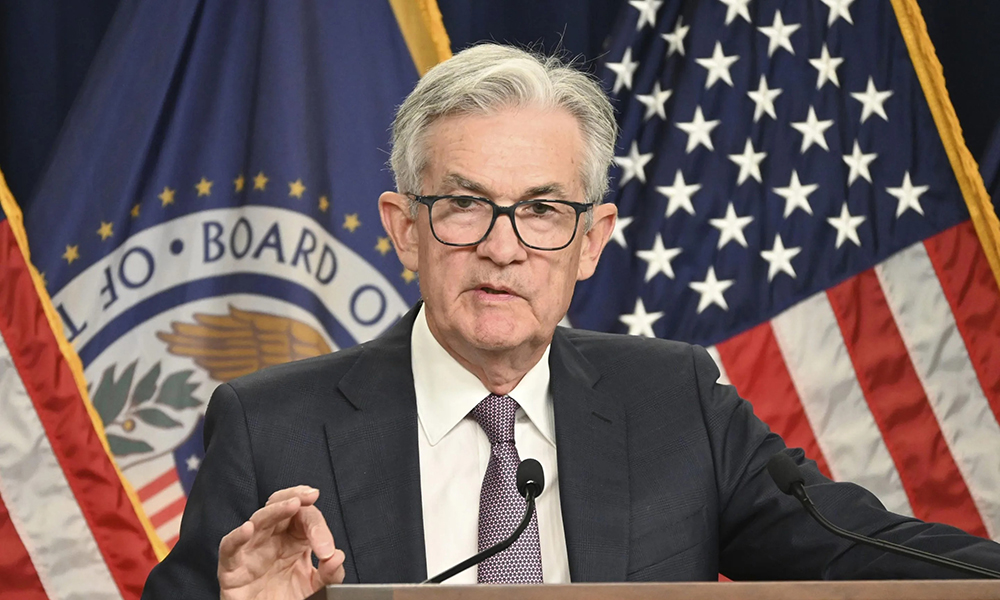美联储2%的通胀目标有什么依据?就是随便定的

为了降低通胀率,美联储今年已经六次加息,目前通胀率为7.7%,美联储认为理想的通胀率为2%。但是各国央行行长是如何决定2%是理想的通胀目标而不是其他数字的呢?
这是一些批评美联储的人士提出的问题。上周五,美国银行(Bank of America)是最新一家对此事发表意见的银行,它直言不讳地说:“2%的通胀目标没有什么特别之处。”
美联储并不是唯一一家设定2%的通胀目标的央行。几个国家都设定了同样的目标,似乎更证实了2%的通胀目标是完美的。
然而,美国银行有不同的看法,称美联储可能不愿将2%的通胀目标调整为其他数字,因为这会损害其可信度。
美国银行全球经济学家伊桑•哈里斯(Ethan Harris)写道:“在首次经受严重考验时就调整目标,会削弱央行的可信度,引发对经济滑坡的真正担忧。”
美联储2%的通胀目标在2012年被正式采纳。但美联储和其他央行在上世纪七八十年代的高通胀时期以非正式的方式使用了这一通胀目标。美国银行表示,这一目标为政策制定者提供了“缓冲”,为他们在经济衰退期间留有降息空间,同时也在很大程度上消除了通缩风险。
哈里斯写道:“假设实际的中性政策利率为2%,而在繁荣时期,潜在通胀率上升到如3%。”然后,为了收紧政策,央行将把政策利率提高到5%以上。如果下一次经济衰退到来时,他们可以在利率降至零之前将利率下调5%以上。以历史标准衡量,这样的缓冲似乎是足够的。”
哈里斯说,尽管如此,很少有迹象表明2%是“最佳目标”。
"证据显示,与稳定的2%的通胀目标相比,稳定的4%的通胀率带来的额外成本非常小。无论设定哪种通胀目标,经济都会适应这样的情况。"
哈里斯还认为,2%的通胀目标并不一定能“满足”央行必须保持价格稳定的目标,他指的是美联储的两大主要目标:确保最大就业和保持价格稳定。
美国银行说,如果通胀率稳定在3%,美联储可能会做出妥协,或给自己更多时间(尽管没有明确的最后期限)来实现2%的通胀目标。美国银行说,温和的经济衰退可能会使通胀率降至3%,之后美联储可能会逐渐将通胀率降至2%——类似于上世纪80年代和90年代发生的情况。
私人投资公司喜达屋资本集团(Starwood Capital Group)首席执行官巴里•斯特恩利希特(Barry Sternlicht)和著名经济学家威廉•斯普里格斯(William Spriggs)此前在接受《财富》杂志采访时表示,尽管如此,美联储对2%的通胀目标的执着有可能让经济陷入衰退。
斯普里格斯说:“2%的通胀目标是可以改变的。这一目标并不是经济模型得出的结果,即2%的通胀目标是理想的通胀目标。”
斯特恩利希特曾抨击美联储使用滞后的消费者物价指数数据,称这些数据并不能显示通胀的实时情况,他对2%的通胀目标提出批评。
“我认为设定2%的通胀目标有点武断。”斯特恩利希特说。“通胀目标可能是3%或4%吗?3%或4%也没关系啊。”
他补充说:“我认为2%作为人为设定的目标可能看起来是一个不错的数字。但它是如此接近于零。问题出在,当你追求2%的通胀目标时,通胀率很容易降到-2%。你可能会进入一个没有需求、商品过多的通缩世界。”
无论如何,哈里斯建议美联储等到通胀得到控制后再对2%的通胀目标做出改变。他说,到那时,“对缺乏可信度或经济滑坡的担忧就会少得多。”(财富中文网)
译者:中慧言-王芳
为了降低通胀率,美联储今年已经六次加息,目前通胀率为7.7%,美联储认为理想的通胀率为2%。但是各国央行行长是如何决定2%是理想的通胀目标而不是其他数字的呢?
这是一些批评美联储的人士提出的问题。上周五,美国银行(Bank of America)是最新一家对此事发表意见的银行,它直言不讳地说:“2%的通胀目标没有什么特别之处。”
美联储并不是唯一一家设定2%的通胀目标的央行。几个国家都设定了同样的目标,似乎更证实了2%的通胀目标是完美的。
然而,美国银行有不同的看法,称美联储可能不愿将2%的通胀目标调整为其他数字,因为这会损害其可信度。
美国银行全球经济学家伊桑•哈里斯(Ethan Harris)写道:“在首次经受严重考验时就调整目标,会削弱央行的可信度,引发对经济滑坡的真正担忧。”
美联储2%的通胀目标在2012年被正式采纳。但美联储和其他央行在上世纪七八十年代的高通胀时期以非正式的方式使用了这一通胀目标。美国银行表示,这一目标为政策制定者提供了“缓冲”,为他们在经济衰退期间留有降息空间,同时也在很大程度上消除了通缩风险。
哈里斯写道:“假设实际的中性政策利率为2%,而在繁荣时期,潜在通胀率上升到如3%。”然后,为了收紧政策,央行将把政策利率提高到5%以上。如果下一次经济衰退到来时,他们可以在利率降至零之前将利率下调5%以上。以历史标准衡量,这样的缓冲似乎是足够的。”
哈里斯说,尽管如此,很少有迹象表明2%是“最佳目标”。
"证据显示,与稳定的2%的通胀目标相比,稳定的4%的通胀率带来的额外成本非常小。无论设定哪种通胀目标,经济都会适应这样的情况。"
哈里斯还认为,2%的通胀目标并不一定能“满足”央行必须保持价格稳定的目标,他指的是美联储的两大主要目标:确保最大就业和保持价格稳定。
美国银行说,如果通胀率稳定在3%,美联储可能会做出妥协,或给自己更多时间(尽管没有明确的最后期限)来实现2%的通胀目标。美国银行说,温和的经济衰退可能会使通胀率降至3%,之后美联储可能会逐渐将通胀率降至2%——类似于上世纪80年代和90年代发生的情况。
私人投资公司喜达屋资本集团(Starwood Capital Group)首席执行官巴里•斯特恩利希特(Barry Sternlicht)和著名经济学家威廉•斯普里格斯(William Spriggs)此前在接受《财富》杂志采访时表示,尽管如此,美联储对2%的通胀目标的执着有可能让经济陷入衰退。
斯普里格斯说:“2%的通胀目标是可以改变的。这一目标并不是经济模型得出的结果,即2%的通胀目标是理想的通胀目标。”
斯特恩利希特曾抨击美联储使用滞后的消费者物价指数数据,称这些数据并不能显示通胀的实时情况,他对2%的通胀目标提出批评。
“我认为设定2%的通胀目标有点武断。”斯特恩利希特说。“通胀目标可能是3%或4%吗?3%或4%也没关系啊。”
他补充说:“我认为2%作为人为设定的目标可能看起来是一个不错的数字。但它是如此接近于零。问题出在,当你追求2%的通胀目标时,通胀率很容易降到-2%。你可能会进入一个没有需求、商品过多的通缩世界。”
无论如何,哈里斯建议美联储等到通胀得到控制后再对2%的通胀目标做出改变。他说,到那时,“对缺乏可信度或经济滑坡的担忧就会少得多。”(财富中文网)
译者:中慧言-王芳
U.S. Federal Reserve Chairman Jerome Powell.
KYODO NEWS—GETTY IMAGES
The Federal Reserve has raised interest rates six times this year in its effort to lower inflation—currently at 7.7%—to what it considers to be the ideal level of 2%. But how did the central bankers decide that 2% is ideal rather than some other number?
It’s a question several Fed critics have raised. On Friday, Bank of America was the latest to weigh in on the matter, saying bluntly, “There is nothing special about 2%.”
The Fed has company in its 2% inflation target. Several countries have the same target, seemingly giving more confirmation that 2% is perfect.
Bank of America, however, has a different take, saying that the Fed could be reluctant to adjust its 2% target to some other number because it would undermine its credibility.
“Moving the target the first time it is seriously tested undercuts central banks’ credibility, raising real concerns about a slippery slope,” Bank of America’s global economist, Ethan Harris, wrote.
The Fed’s 2% target was officially adopted in 2012. But the Fed and other central banks had used it more informally amid the high inflation in the 1970s and 1980s. The target has provided “buffers” for policymakers by leaving room to cut interest rates during a recession while also largely eliminating the risk of deflation, BofA said.
“Suppose the neutral real policy rate was 2% and underlying inflation increased to, say, 3% during a boom,” Harris wrote. “Then to make policy restrictive the central bank would raise the policy rate to above 5%. If and when the next recession came, they would be able to cut rates by more than 5% before hitting zero. By historic standards, that seems like an adequate buffer.”
Still there’s little to suggest that 2% is the “optimal target,” Harris said.
“The evidence is that steady 4% inflation imposes very small additional costs compared to steady 2% inflation. Either way the economy adapts.”
Harris also argued that 2% doesn’t necessarily “satisfy” the notion that central banks must maintain price stability, referring to the Fed’s two primary goals of ensuring maximum employment and maintaining.
If inflation stabilized at 3%, the Fed may compromise or give itself more time (although there’s no clear deadline) to reach its target, BofA said. A mild recession could drive inflation down to 3%, after which the Fed could reduce inflation to 2% over time—similar to what happened in the 1980s and 1990s, BofA said.
Nonetheless, the Fed’s obsession with its 2% target risks pushing the economy into a recession, Barry Sternlicht, CEO of private investment firm Starwood Capital Group, and prominent economist William Spriggs, previously told Fortune.
“There’s nothing written in stone that says inflation is supposed to be limited to 2%,” Spriggs said. “That target was not the result of an economic model that says 2% inflation is the ideal inflation.”
Sternlicht, who has slammed the Fed for using lagging numbers—measured by the consumer price index—that don’t actually show what’s happening with inflation in real time, criticized the 2% target.
“I think the number 2% is kind of arbitrary,” Sternlicht said. “And could it be 3% or 4%? That would be fine.”
He added: “I think 2% as an artificial target may seem like a nice number. But it’s so close to zero. And the problem is, as you go to 2%, you could easily go to minus 2%. You could go into a deflationary world where there’s no demand and too many goods.”
Whatever the case, Harris suggested that the Fed wait until inflation is under control to make any changes to its 2% target. At that point “there would be much less concern about a lack of credibility or slippery slope,” he said.













